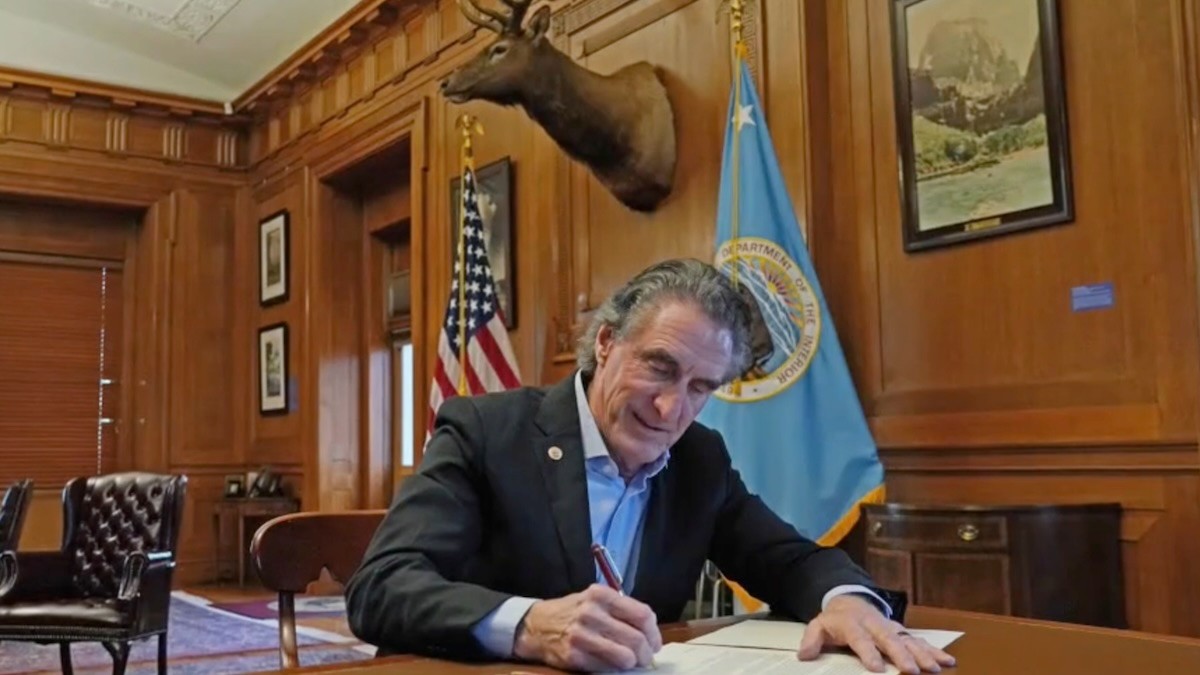
When it comes to public lands, there aren’t many people with more influence than the Secretary of Interior. Under his or her leadership, the Department of Interior oversees 11 federal bureaus, offices, and land-management agencies, including the Bureau of Land Management, National Park Service, and US Fish & Wildlife Service. Collectively, those agencies manage 425 million acres of land—an area larger than all of Alaska.
So, who’s leading the department under President Trump? His name is Doug Burgum, and the Senate confirmed him for the post in late January by a 79-18 margin, with about half of the Senate Democrats voting with all 53 Republicans.
Burgum’s background is a mix of private and public sector experience. In 1984, he became president of a tech startup called Great Plains Software, which developed business management technologies. After a successful 20-ish year bout with the company, he sold it to Microsoft in 2001 for $1.1 billion. Then, in 2016, he ran for North Dakota governor and held the position until December 15th of last year.
Now, Burgum is set up for what is likely to be a contentious four years, as Trump has mandated increased energy development on nearly all federal lands. Still, Burgum might be one of the best-suited and well-balanced people for the job.
In addition to a baseline recognition of climate change (“I believe that climate change is a global phenomenon for sure,” he said in a Senate hearing), he’s received many other commendatory remarks from both Democratic and Republican Senators (“You are held in very, very high esteem across this country,” said Colorado senator John Hickenlooper in the hearing).
Similarly, Burgum has received mostly positive reviews from sportsmen’s groups, especially regarding his balanced approach to resource management, wildlife, and energy development on public lands.
“Governor Doug Burgum has often been a strong advocate for science-driven wildlife management, conservation of wildlife habitat, promotion of the outdoor recreation economy, and reductions in pollution through commonsense carbon management and appropriately-sited clean energy,” said Collin O’Mara, president and CEO of the National Wildlife Federation.
Backcountry Hunters & Anglers President Patrick Berry also recognized his conservation ethos, saying, “Secretary Burgum has expressed admiration for former President Theodore Roosevelt, an avid sportsman and conservationist whose legacy laid the foundation for America’s public lands system… As Secretary Burgum seeks to balance energy development with outdoor recreation and conservation of our public lands, we encourage him to embody the ethos championed by Roosevelt.”
As for wildlife and land management, Burgum appears ready to work with state agencies and biologists when implementing his agenda. Speaking broadly about his tenure in North Dakota during the senate hearing, he said, “The people that work in Game & Fish at the state level, that are working on [conservation issues]—I haven’t met somebody at the federal level who cares more about the soil, the air, the water, the fish, the wildlife than the people that we have at the state level.”
Burgum also served as chairman of the North Dakota Land Board and the Western Governor Association from 2019-2020, which means he has a solid understanding of the intricacies of land conservation and a broad knowledge of important issues across the West.
However, serving under President Trump, Burgum might have his hands tied on certain issues. Already, on one of his first days on the job, Burgum signed a secretarial order (number 3418) that calls for the reinstatement of all leases issued by the Bureau of Land Management for natural resource development that were canceled during the entirety of the Biden administration.
BHA’s Patrick Berry slammed the move in a press release: “By elevating and prioritizing questionable energy development needs and increased mining for private interests on land owned by all Americans, the public is shut out of their own public lands legacy,” he said. “Conservation of fish and wildlife habitat and opportunities for hunters and anglers must be included as equal values."
President Trump also directed Burgum, under the “Unleashing American Energy” executive order signed on January 20th, to “reassess any public lands withdrawals for potential revision.” Buried toward the bottom of the sweeping executive order, this one line takes aim at national monuments, which are “withdrawn” or off-limits to mining and oil development thanks to the 1905 Antiquities Act.
Over the past decade, two national monuments in particular—Bears Ears and Grand Staircase-Escalante—have been in the crosshairs. The ground beneath Bears Ears contains huge amounts of uranium, and the national monument was slashed by 85% in 2019 under Trump. Biden restored the boundaries in 2021, but it’s likely they’ll be redrawn once again. Similarly, Grand Staircase Escalante harbors vast coal beds and could face similar scrutiny. However, under Trump’s orders, Burgum is tasked with reassessing all national monuments—many of which serve as important, intact wildlife habitat—not just these two.
Additionally, it’s worth noting that under Burgum’s leadership, North Dakota attorney general Drew Wrigley submitted an Amicus Brief in support of Utah’s attempted land-grab this fall. Wrigley was first appointed by Burgum in 2022 when the acting attorney general passed away. Ultimately, the Supreme Court opted not to take up the lawsuit, but it is likely to reappear at a lower-level federal court.
On the whole, Burgum is one of President Trump’s more moderate cabinet picks, with experience in balancing a multitude of uses on public lands. His purported conservation ethos and ideas might be muted by President Trump’s orders, but it’s a safe bet that he’ll at least have hunters, anglers, clean water, and wildlife habitat in mind when heading up one of the most sweeping, influential departments of the federal government.
In Burgum’s words, “We can protect the land we need to protect, but also solve issues.”
Feature image via US Department of the Interior.




